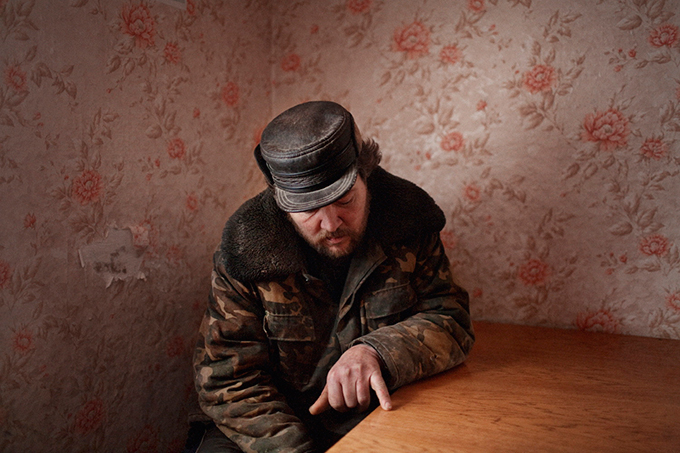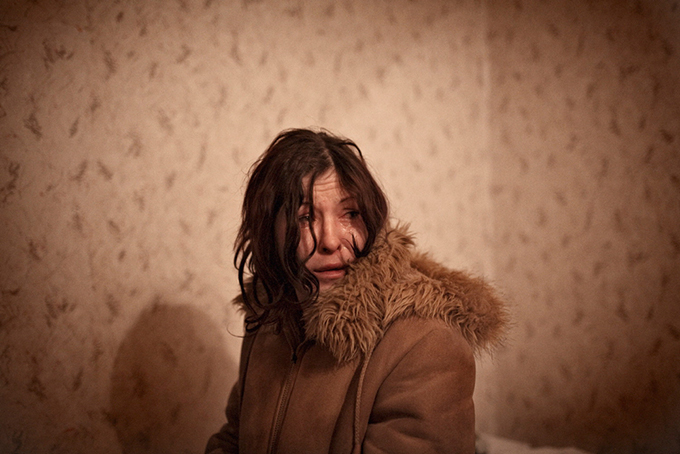Catalogue essay
Beating the Bounds: Donald Weber’s Interrogations
by Randy Innes
I. The Latin term rogare means to ask for something. It is associated with ritual acts of supplication and prayer, and in the Catholic tradition Rogation Days replaced an earlier Roman ritual that included the sacrifice of a goat as a plea for healthy crops. Rogation Days themselves are days of abstinence and fasting that occur immediately before the Ascension. They remain associated with a prayer to God for a bountiful harvest.
In the Protestant tradition Rogation Days are associated with the social ritual of surveying and re-affirming the boundaries of one’s fields. Processions would walk around the boundaries of farms and parishes and leave fresh evidence of passage by hitting trees, rocks, stakes and other boundary markers with willow sticks. These processions were known as the Beating of the Bounds. They were ritual negotiations of limits: they re-established ownership of and demonstrated authority over a given territory. Mapmaking, surveying, and effective documentation and record keeping techniques all but eliminated the need for the Beating of the Bounds.
II. Donald Weber’s Interrogations is a set of photographs that are concerned with the act of surveying boundaries, with soliciting and gathering information, and with the exercise of authority. In this way this project carries the vestiges of its sacred-symbolic root rogare, and of its more secular, social ritual meanings. Weber’s Interrogations unfolds in two movements. The first is a Prologue that, in about two dozen photographs, surveys a cultural landscape that stretches from the Ukraine to Siberia. Photographs of run-down apartment blocks, of the regional landscape, and of impoverished urban settings combine with snapshots of unnamed people to present a portrait of a terrain that is often associated with post-Soviet states. The Prologue pictures the landscape in which the second movement will take place.
The photographs in the Prologue trace the boundaries of a bolshaya zona. Weber became familiar with this Russian slang expression during the time he spent in Ukraine and Russia, during and after the 2004 Orange Revolution. The expression conjures a place that remains just out of reach, an ideal or promised land.1 These photographs
create an impression and give us a sense of the character of this place, but they offer little in the way of documentary information. The Prologue is a study or survey – the studium, to recall Roland Barthes – but not yet the primary concern of the series.The selection of pictures in the prologue negotiate the tension between photography’s function as a document or as evidence, and photography’s affective, compelling force.
III. The second movement in this project is called Interrogations. This related set of photographs shifts from survey or study, to a singular, repetitive examination. In more than three dozen photographs Weber pictures men and women seated alone in bare, wallpapered rooms in this same anonymous, eastern Ukrainian town. The photographs are visually uniform. They present a dull, faded colour palette and a run-down domestic feeling one might associate with small or medium sized, blue-collar towns. Here the slang term malinkaya zona dashes the desires that accompany the bolshaya zona, conjuring enforced boundaries, a sense of hopelessness, and, much more literally, to imprisonment and the loss of freedom within a broader system of power and authority.2
These men and women are detainees of a local police force and are for the most part ragged looking. None are named. In one image an arm enters from the side of the frame, holding a gun to a detainee’s head; in another a woman holds her hands to her head and seems to be braced for a blow from beyond the frame; in another a man cries; and in yet another, a man gesticulates in a way that suggests a feigning of innocence or ignorance. Who, me?
While the ritual that takes place in the interrogation room is grounded in real social and political conditions, it carries with it a sense of group performance and theatricality. The police interrogator solicits information from detainees, individuals who are, in this setting, drawn from the shady sub-cultures that form the local underworld. In turn the detainees perform their role—the role made visible here in exaggerated gestures and fearful dispositions. Although some form of economy and exchange may be at work, this is conditioned by an exercise of power that becomes visible in Weber’s photographs only in its effects. The invisibility of the power source has a symbolic correlate: Weber views this project in part as “a way to see the modern State as a primitive and sacrificial rite of unnamed Power.”3
The interrogation is a reminder of boundaries and of authority, a reminder that, under these conditions, has to be repeated at intervals, isolated from the bureaucracy of paperwork and procedure, in order to maintain its effectiveness within the dynamics and rituals of the streets and the underworld. However the interrogator is just as concerned with reaping information and with the fruits of his harvest as he is with leaving reminders of the power and authority he has over his domain – of beating the bounds.
An interrogation is a formal practice, a performance that is a reminder and affirmation, each time, of the balance and nature of power. Interrogation preserves the importance and richness of the present of the interrogation itself, while ensuring a role and a need for future interrogations.
IV. Weber and his camera collaborate in this performance, along with interrogator and detainee. The photographer gained the trust of several key people over a number of years, including the police investigator, who came to trust Weber enough to allow him to attend the interrogations. A next step involved soliciting permission from detainees. Not all were interested in having their interrogation photographed.
Weber sat in a chair in the interrogation room and set up his camera with a view of the detainee. Like the interrogation itself, the camera preserves a particular link to the present of the event. The authority of interrogation derives in part from a repeated and repeatable present. In this way interrogation intersects with the practice of photography, which is also a repeatable practice bound to a given moment in time that circumscribes and organizes this moment into a visual field.
Photography solicits and organizes its harvest according to its own means. These means are never neutral or invisible: the repeated, simple structure of this series concentrates attention on the event of interrogation and on the structure of photographic capture, concentrating attention and reducing distraction. Photography becomes an integral part of the production of meaning (not only its reproduction) and here the processes of soliciting and surveying take precedence over information related to the detainee. “No matter how much we bear witness”, Weber says, “I am always an ingredient.”4
Each of the participants plays a role in this performance. The detainees perform for both the interrogator, and the photographer and his camera. In turn, the actions of the interrogator and of the photographer unfold in response to those of the detainees.
Interrogations offers a glimpse of a landscape whose disposition is determined by secularized rituals and a concentration of power and authority. As we are conditioned by what we see, so too are we conditioned by how we are seen.
NOTES
1. Weber in conversation with the author, September 12 2014.
2. Weber in conversation with the author, September 12 2014.
3. www.lensculture.com/articles/donald-weber-interrogations
4. Weber in conversation with the author, September 12 2014.
Randy Innes, November 2014
©Randy Innes. All Rights Reserved.
Bio
Randy Innes holds a PhD in Visual & Cultural Studies from the University of Rochester. He has taught at several universities and he contributed to significant developments at the School of the Photographic Arts: Ottawa.
His research interests include the history and theory of photography, museum theory and exhibition practice, and aesthetic theory. Randy held the History of Photography research fellowship at the National Gallery of Canada, and he has published research and exhibition essays on historical and contemporary photography, along with other topics. An article on Adam Broomberg and Oliver Chanarin appears in the special issue of the Canadian Art Review (RACAR) dedicated to War and Photography (Fall 2014).




